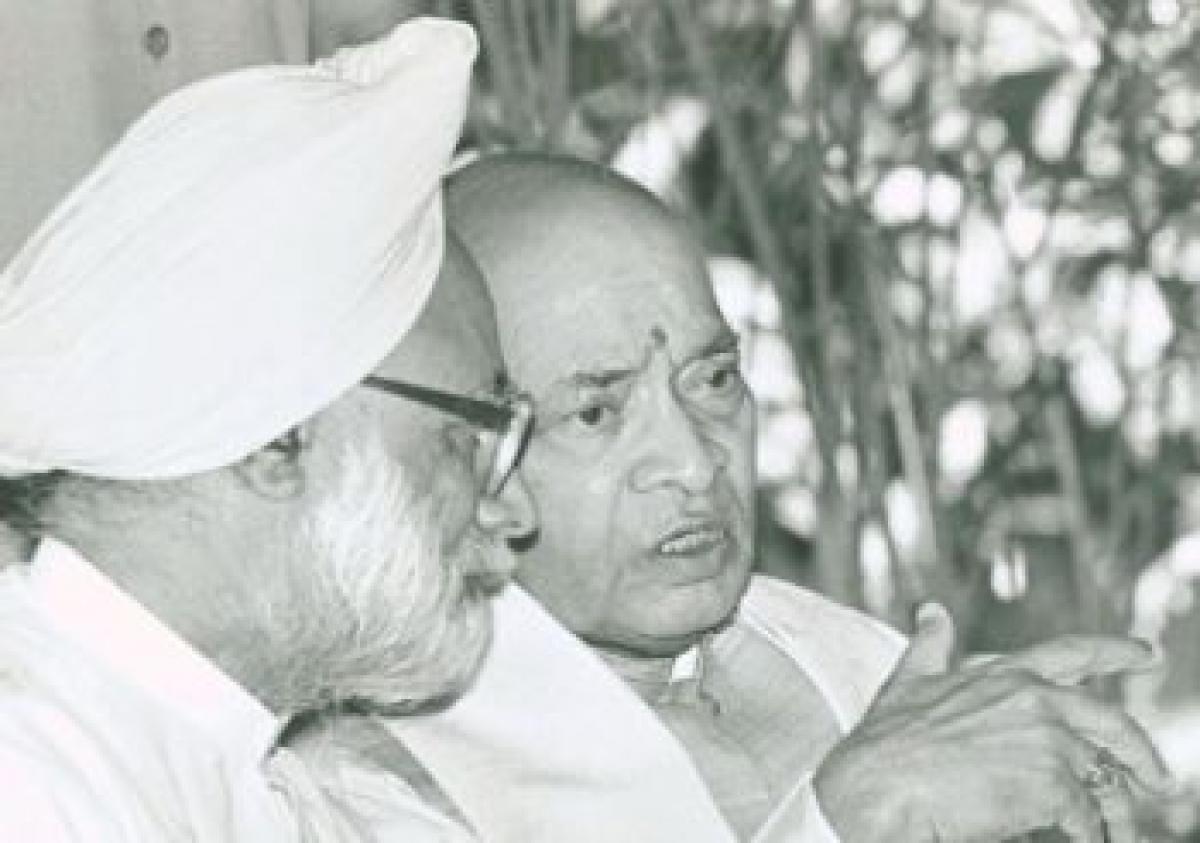Live
- Mannara Chopra’s refreshing photoshoot brings summer vibes
- Vishal’s thriller ‘Rathnam’ clears censor; all set to hit theatres
- Rashmika wraps up key schedule of Dhanush’s ‘Kubera’
- Cycling vs walking: Which is better for weight loss?
- ‘The Delhi Files’ to hit floors this year
- Former Pakistan women’s captain Bismah Maroof calls time on her playing career
- CM Kejriwal’s arrest not based on belated contradictory or coerced statements: ED’s affidavit in SC
- PM Modi urges people to not get upset with 'insulting language' used against him by Congress
- North Korea touts ties with Russia on Kim-Putin summit anniversary
- CM Yadav-led MP Govt will run with full speed after LS polls: PM Modi
Just In

Manmohan Singh shot into prominence when he as Finance Minister in the P V Narasimha Rao cabinet initiated economic reforms in July 1991. The process that made a world of difference enters 25th year this month. Cutting across political ideologies, central and state governments that assumed power in the subsequent period embraced the reforms path.
Manmohan Singh shot into prominence when he as Finance Minister in the P V Narasimha Rao cabinet initiated economic reforms in July 1991. The process that made a world of difference enters 25th year this month. Cutting across political ideologies, central and state governments that assumed power in the subsequent period embraced the reforms path.
Adam Smith’s classical economic thinking that none, especially the State, should interfere in the affairs of the economy inspired the Indian economic policy formulation. The deregulation, delicensing and debureaucratisation of the economy redefined the role of the State from that of an inspector or monitor to a facilitator for investment.
Government leaders started scouting for investment from within and abroad. Tax rates were slashed with a hope that lower the levels of taxation, greater would be the compliance and thereby buoyancy in revenues. Imports were liberalised. Labour laws are being relaxed. Public sector monopoly is almost broken and barriers to trade bridged.
A competitive economic environment was ushered in. ‘Perform or perish’ became the new market mantra. The economic reforms called by different names like economic liberalisation, structural adjustment, new economic and industrial policies, macro-economic stabilisation etc., unveiled free market economics. The fiscal profligacy gave way to fiscal austerity regime.
Such wide-ranging changes in the economic policy modernised the Indian economy which is integrated into the global economy. Growth saw new frontiers with occasional falls. Foreign exchange reserves today are beyond the comfortable mark. Trade improved. Investment, especially foreign investment flows, surpassed targets.
Constraints on production were removed, leading to significant improvement in productivity and efficiency. New markets opened up. Prosperity is visible. Scarcity of goods and services is now the experience of bygone era. Perhaps, it is difficult for the new generation even to believe that people used to wait for months and years to buy a scooter, to get a telephone connection or gas supply even with cash in hands.
But, the reforms process has its negatives, too. The unbridled privatisation has given birth to crony capitalism. The conspicuous consumption and conditions of hidden hunger and semi-starvation coexist, mocking at the growth trajectory. Even the protagonists of reforms admit that inter-regional and inter-State disparities widened during the reforms-led high growth period. The human development levels still remain at an abominably low level. Humongous inequalities of all kinds and multiple deprivations persist.
Concerns on sluggish growth, deficits, inflation etc., still remain. The Welfare State is wilting away. Mountainous food stocks and mounting hunger depicts the ugly contrast in the economy. Economy suffers from predatory attacks of footloose capital. Tax-to-GDP ratio is still low compared to many a free market economy.
Ignominious loot of public resources stares at the market economics. Market phobia is replaced by market mania. Distributive justice became the casualty. The time has come to look at both the agony and the ecstasy of reforms. Reforms are irreversible. But, they should be inclusive and equitable.

© 2024 Hyderabad Media House Limited/The Hans India. All rights reserved. Powered by hocalwire.com







